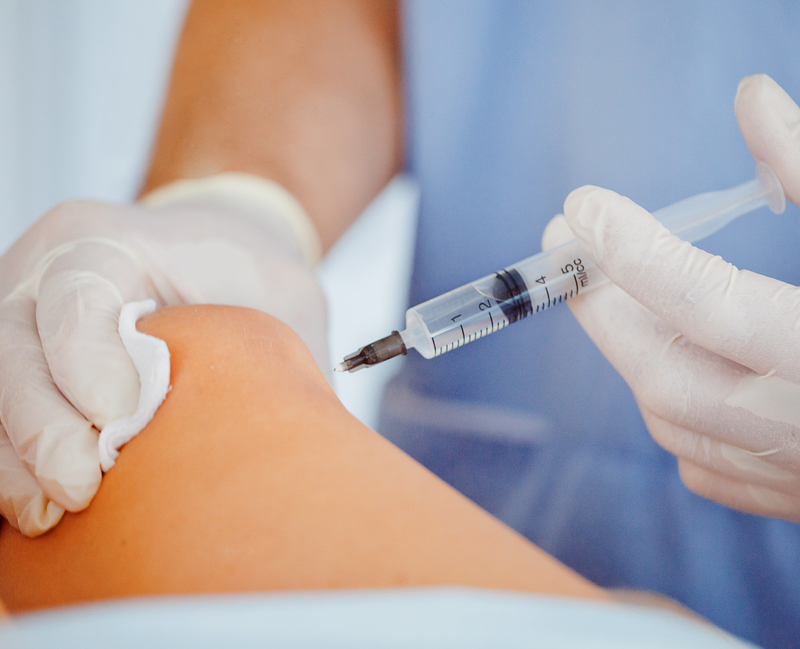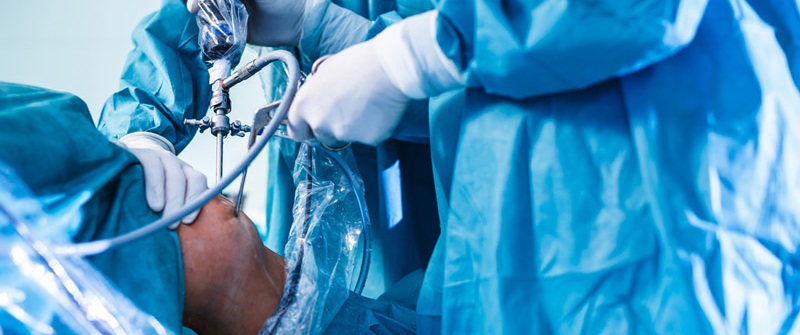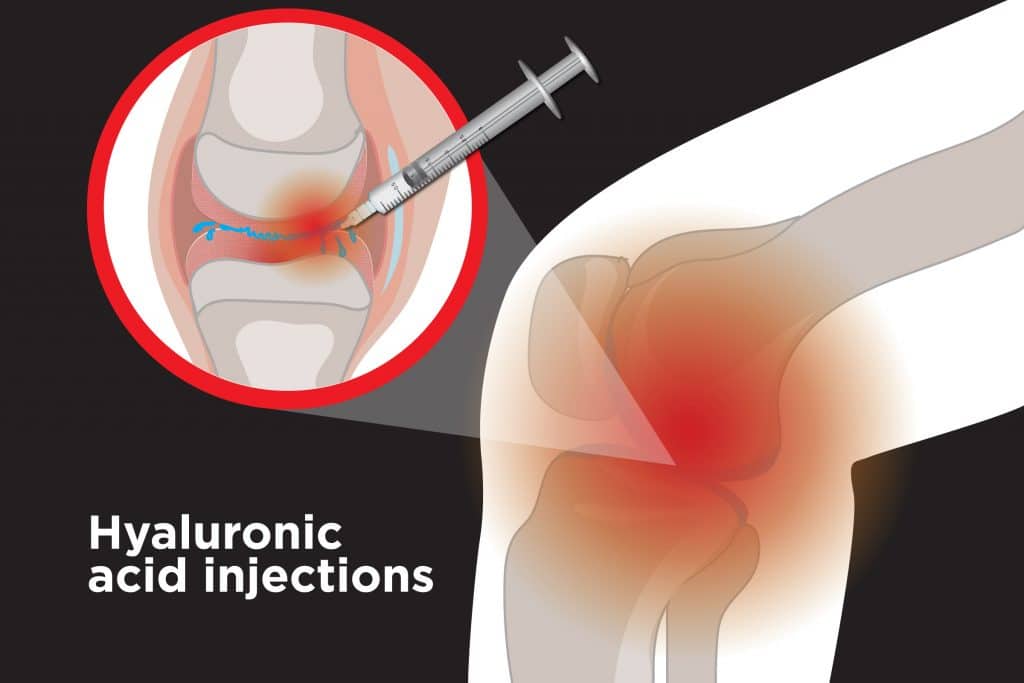If you’ve been experiencing chronic debilitating pain, know that you’re not alone. It’s very common. According to the CDC, about 20.4% of adults in the US suffer from severe chronic pain. That’s a huge number. But there are many ways to treat it.
Perineural Injection Therapy (PIT) is the latest revolutionary treatment in regenerative medicine. It’s an injection therapy that targets your nerves to reduce nerve inflammation and alleviate chronic pain. It also stimulates cell regeneration and speeds up tissue healing.
Renowned pain management specialist, Dr. Henry Sardar, is now offering perineural injection therapy at our Brooklyn, New York clinic. Using this non-surgical natural treatment for pain, Dr. Henry has treated hundreds of patients who’d lost hope in living a pain-free life.
Read on to learn more about Perineural Injection Therapy, how it works, its efficacy, and other procedures you can combine with it for optimal results.
What Is Perineural Injection Therapy (PIT)?
Your nerves are responsible for sending and receiving signals to your brain. This (unfortunately) also includes pain signals.
When you have an injury or tissue inflammation that involves your nerves, they can become irritated and transmit pain signals to the brain. This type of pain is called neuropathic pain.
Neuropathic pain occurs when your pain nerves are damaged or not functioning properly. This can happen with:
- Sports injuries, trauma, and surgical injuries, wherein damage to the nerves are common.
- Moreover, certain chronic diseases, like diabetes, can also damage your nerves and cause chronic persistent pain that doesn’t go with traditional therapy.
- Neurologic illnesses, like multiple sclerosis and multiple myeloma, where the pain originates in the diseased nerves.
- Vasodilation: The dextrose solution inhibits the release of inflammatory substances released by cutaneous nerves, thereby reducing nerve inflammation and subsequently expanding your blood vessels. The widening of your blood vessels results in an increased supply of blood, oxygen, and nutrients to the affected area.
- Weakening pain receptors: Chronic pain occurs when pain receptors in a body region are constantly active and transmitting pain signals. 5% dextrose has an analgesic effect that turns off the pain signals from the overactive receptors, effectively eliminating neuropathic pain.
- Weakening pain centers: Not only does PIT block the pain receptors, but it also blocks the pain centers in your spinal cord and prevents them from processing and transmitting pain signals to your brain. This makes it one of the best alternative treatments for chronic pain.
- Stimulate healing and regeneration: Dextrose has a proliferative effect on cells. When the solution is injected into the body, it comes in contact with connective tissues and cells. It induces cellular proliferation and regeneration. This effect has been observed in chondrocytes and fibroblasts, cells involved in tissue formation. Using dextrose, neural prolotherapy is now a pillar in regenerative medicine.
- Knee pain
- Shoulder pain
- Elbow pain
- Ankle pain
- Cervical pain, pain in the neck region
- Cervical pain, pain in the neck region
- Wrist pain
- Joint pain
- Spine pain
- Chronic low-back pain
- Sprains
- Sprains
- Carpal tunnel pain
- Sprains
- Arthritis pain
- Carpal tunnel pain
- Neuropathic pain in diabetic patients
- Pain from diseases of the nervous system (multiple sclerosis, multiple myeloma, etc.)
- Chronic migraine
- Pain from scar tissue
- Soft tissue pain, pain in the muscles, tendons, or ligaments
- Compression fractures, fractures in the bones of your spine
- Slipped or bulging discs pain
- Pain from a ligament injury
- Recurrent pain in any part of your body
- Pain from a chronic injury
- Frequent use of medication yet no improvement in the pain level
- Painful or retarded post-surgical rehabilitation
- Difficulty flexing your joints
- Restricted activity because of painful nerves
- Other musculoskeletal disorders
- Improvement in blood circulation
- Blockage of pain sensation by the nerves
- Little to no reported adverse effects
- Stabilization of joints after achieving improvements in pain levels
- Significant reduction in neuropathic pain
- Alleviation of musculoskeletal pain
- Cold laser therapy
- Shock-wave therapy
- Cryotherapy
- Kinesiology taping
- Electromagnetic Transduction therapy (EMTT)
- TECAR Therapy
- Platelet-rich plasma (PRP) therapy
- Acupuncture Therapy
- Aqua Therapy
- Ultrasound-Guided Injections
- Fluoroscopically Guided Epidural Steroid Injection and Facet Injection
- Physical and Occupational Therapy
Perineural Injection Therapy (PIT) is also known as Neural Prolotherapy or Lyftogt Perineural Injection Treatment. This treatment was first introduced by Dr. Paul Pybus and Dr. Roger Wyburn-Mason and refined by John Lyftogt to become what it is today – an effective treatment for neuropathic pain.
PIT achieves its effects through a series of biological reactions that promote your natural healing process and pain suppression mechanisms.
Neural prolotherapy aims to reduce inflammation in the soft tissue. The injection of a dextrose solution triggers cell regeneration and effectively slows down transmission in your pain receptors.
How Does Perineural Injection Therapy Work?
When your cutaneous nerves are irritated and inflamed, they send signals to the brain, which you register as pain.
PIT uses injections of a 5% dextrose solution that prompt biological reactions in and around the nerves to achieve its therapeutic effects. Here’s how PIT works to reduce pain and stimulate healing:
Dr. Sardar has seen the great results his patients have achieved with PIT therapy. Many have managed to cure the chronic pain that’s been limiting them for years. This is why Dr. Henry is now offering patients test neural prolotherapy sessions at his pain management clinic in Brooklyn, New York.
What Conditions Does Perineural Injection Therapy Treat?
Perineural injection is one of the best ways to treat chronic nerve pain resulting from nerve inflammation. These include musculoskeletal injuries, inflammatory diseases, diabetes, and neurologic diseases.
PIT therapy is used to treat all of the following painful conditions:
A lot of patients prefer perineural injection therapy over conventional treatments.
PIT has a high success rate, and with a positive response, it may eliminate pain completely in some patients, especially if combined with other therapies. As such, neural prolotherapy is rapidly gaining popularity among Dr. Sardar’s patients.
Reach out to us at Pain Therapy Medical Care if you experience any chronic pain conditions like the ones mentioned above. Dr. Henry is giving his patients the unique opportunity to test PIT therapy and see the benefits first-hand.
Am I A Candidate for Perineural Injection Therapy?
If you’re looking for a non-surgical and revolutionary way to treat chronic pain, then PIT therapy is for you. You’re a great candidate for neural prolotherapy if you have:
Still unsure if your condition is suitable for PIT?
Consult with Dr. Sardar at his pain management clinic in Brooklyn. With his expertise in physical medicine and rehabilitation, Dr. Sardar can determine whether PIT is a suitable option for you. If PIT is not for you, he will recommend an alternative pain therapy that’s more suitable for your condition.
What Are The Benefits Of Perineural Injection Therapy?
Perineural subcutaneous injections are a safe, reliable treatment for reducing chronic pain. It is a short and straightforward procedure that has patients feeling immediate results.
Unlike surgical procedures, it involves no surgical incisions, no scarring, and minimal risks and recovery time. Non-surgical pain treatments are quickly replacing surgery as a first-line treatment for chronic pain for this reason.
Moreover, PIT is a more natural remedy for pain compared to steroid injections. It helps you avoid all of the undesirable side effects of steroids, namely: weight gain, muscle weakness, high blood sugar, increased blood pressure, and decreased immunity.
Conventional methods and physical therapy alone are also limited in alleviating chronic nerve pain and other musculoskeletal disorders. This is why combining them with more advanced pain treatment, like neural prolotherapy, exponentially boosts the effects.
Perineural subcutaneous injections are renowned for the following benefits:
How is Perineural Injection Therapy Done?
Dr. Henry Sardar will first pinpoint the source of your pain and thoroughly examine the recipient nerves that will be targeted with the perineural injections.
He’ll then use a small needle to inject the 5% dextrose solution around the painful nerves. The injection works fast and elicits an almost immediate reduction in pain levels.
A session typically lasts around 45 minutes. However, the number of sessions you need can range between 5 to 8, and sometimes more, depending on the cause and extent of your condition.
You may feel some pain after PIT therapy and experience slight bruising, numbness, and redness in the affected area. This is entirely normal and will resolve within a few days.
Dr. Sardar makes sure you are comfortable throughout the treatment. Once the session ends, you can resume your daily activities without any restrictions.
Can Perineural Injection Therapy Be Combined With Other Procedures?
The efficacy of perineural injection treatment can increase when combined with other therapies. However, the treatments Dr. Sardar will incorporate largely depend on your condition’s symptoms, cause, and extent.
Here are some of the treatments he can combine to reasonably alleviate your chronic conditions:
Give Pain Therapy Clinic in Brooklyn, NYC a call at our pain therapy clinic. We are happy to answer any further questions you might have about PIT and other pain management treatments.
Recovery After Perineural Injection Therapy
Your response to the treatment and recovery afterward will depend entirely on your body’s natural healing abilities.
Often, the pain relief after the first PIT treatment only lasts for a few hours. But after successive PIT sessions, the intensity and frequency of the pain gradually decrease.
The pain-relief effects of neural prolotherapy usually start a few minutes after the treatment. In some people, though, it might take a little longer for the pain to disappear.
During recovery from PIT prolotherapy, it’s best to avoid activities that can put pressure on the nerves and connective tissue that just underwent treatment. That means no heavy lifting or engaging in risky sports on the day of the treatment.
Some patients experience mild inflammation, bruising, stiffness, or redness around the injected area. These are natural and can be expected when recovering from PIT injections. You can quickly remedy these using an ice pack for about 15 to 20 minutes.
Usually, there are no medication restrictions for perineural injection treatment. But Dr. Sardar will inform you of any medication that may compete with the action of the dextrose solution.
Is Perineural Injection Therapy Worth It?
Clinical studies have proved the biological mechanisms underlying the therapeutic effects of perineural injection therapy. PIT can successfully reduce the pain caused by various neuropathic and musculoskeletal disorders.
Perineural injection therapy has been gaining popularity among Dr. Sardar’s patients. His patients have described a significant decrease in their pain after only a few sessions. It has been successful in curing persistent chronic pain that fails to respond to traditional treatment. The minimal setup and few to no adverse effects make PIT worth it.
So, if you have chronic pain that just won’t go away, book an appointment and give perineural injection therapy a try.
At PainTherapy Medical Care in Brooklyn, New York, you’ll get a personalized pain treatment plan made by Dr. Henry Sardar himself.
Perineural Injection Therapy (PIT) – Outlook
PIT is a reliable revolutionary approach to neuropathic and musculoskeletal pain. Many of Dr. Sardar’s patients have benefited from PIT and can attest to its success.
This is why Dr. Sardar is offering you the opportunity to test out the effectiveness of Perineural Injection Therapy yourself. He wants his patients to benefit from the effective pain relief that PIT brings. Neural prolotherapy might be just what you need to cure chronic pain and now is your chance to try it.
At our Brooklyn pain management clinic, we accept most major insurance providers: New York State Medicaid, HealthFirst, Fidelis Care, Affinity Group, Metro Plus, Amerigroup, BlueCross / BlueShield Medicaid Plan, and United Health Care Community Plan.
Reach out to us at PainTherapy Medical Care and book a session with Dr. Sardar for advanced and effective pain relief therapy.
Perineural Injection Therapy (PIT) – FAQs
- What is perineural injection treatment? It’s a subcutaneous injection applied beneath the skin or around the source of neuropathic or musculoskeletal pain. It has effective and fast pain relief effects, healing effects, and regenerative effects.
- How long do perineural injections last? Depending on your body’s response to PIT, the relief may last for only a few hours after your first session before the pain returns. With consistent treatment, the effects of PIT last for a longer time until the pain no longer comes back.
- How effective is perineural injection therapy? According to several clinical studies, perineural injection therapy has a high success rate. It’s even more effective when combined with other pain management treatments, like cold laser, shock wave therapy, and cryotherapy.
- Does perineural injection therapy inflict pain? No, it does not. You may experience some slight discomfort around the area being injected. However, Dr. Sardar always ensures your comfort during any procedure.
- How many sessions of perineural injection therapy do I need? The number of sessions you need primarily depends on your chronic condition, its duration, and whether or not you’re receiving other pain therapies in combination with perineural injections. Combining PIT with other pain therapies, like cryotherapy, cold laser, acupuncture, and Kinesio taping results in exponentially faster healing and better pain relief.
- Are there adverse effects of perineural injection therapy? Minor side effects include redness, numbness, and slight bruising. However, these should clear up shortly. There are no known serious complications and side effects for neural prolotherapy.
- What is perineural injection therapy used for? Perineural injection therapy is suitable for treating pain caused by overuse injuries, sports injuries, neurologic diseases, diabetes neuropathy, and other musculoskeletal disorders. You may qualify for this treatment if you want to avoid the side effects and risks associated with surgery and steroid injections.
- What’s in a perineural injection? It can be a dextrose solution of about 5% mixed with sterile water and/or 1% lidocaine. It is clinically tested and entirely safe to inject into the painful area.
Perineural Injection Therapy (PIT) – Further Readings
Products – Data Briefs – Number 390 – November 2020
Neuropathic pain: current definition and review of drug treatment
Diabetic neuropathic pain: Physiopathology and treatment
Perineural Injection Therapy in the Management of Complex Regional Pain Syndrome: A Sweet Solution to Pain
THU0487 PERINEURAL INJECTION THERAPY; A NEW MODALITY IN MANAGEMENT OF MECHANICAL LOW BACK PAIN; A COMPARATIVE STUDY
The Effect of Perineural Injection Therapy in Patients With Carpal Tunnel Syndrome – Full Text View
What are the side effects of anabolic steroid misuse?
Effectiveness of Perineural Injections Combined with Standard Postoperative Total Knee Arthroplasty Protocols in the Management of Chronic Postsurgical Pain After Total Knee Arthroplasty
Perineural Injection Therapy in the Management of Complex Regional Pain Syndrome: A Sweet Solution to Pain




